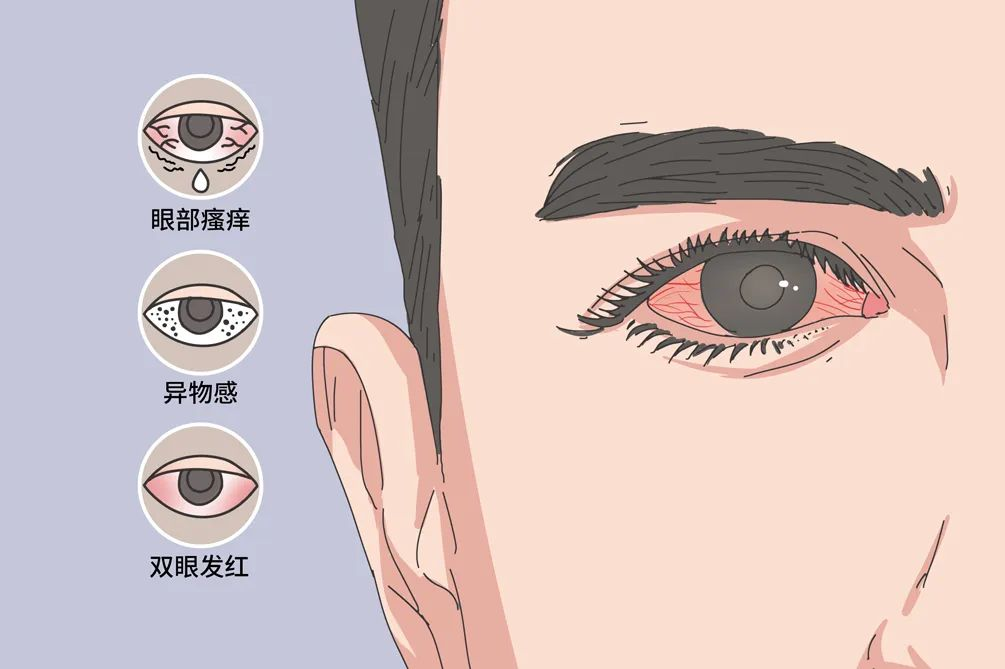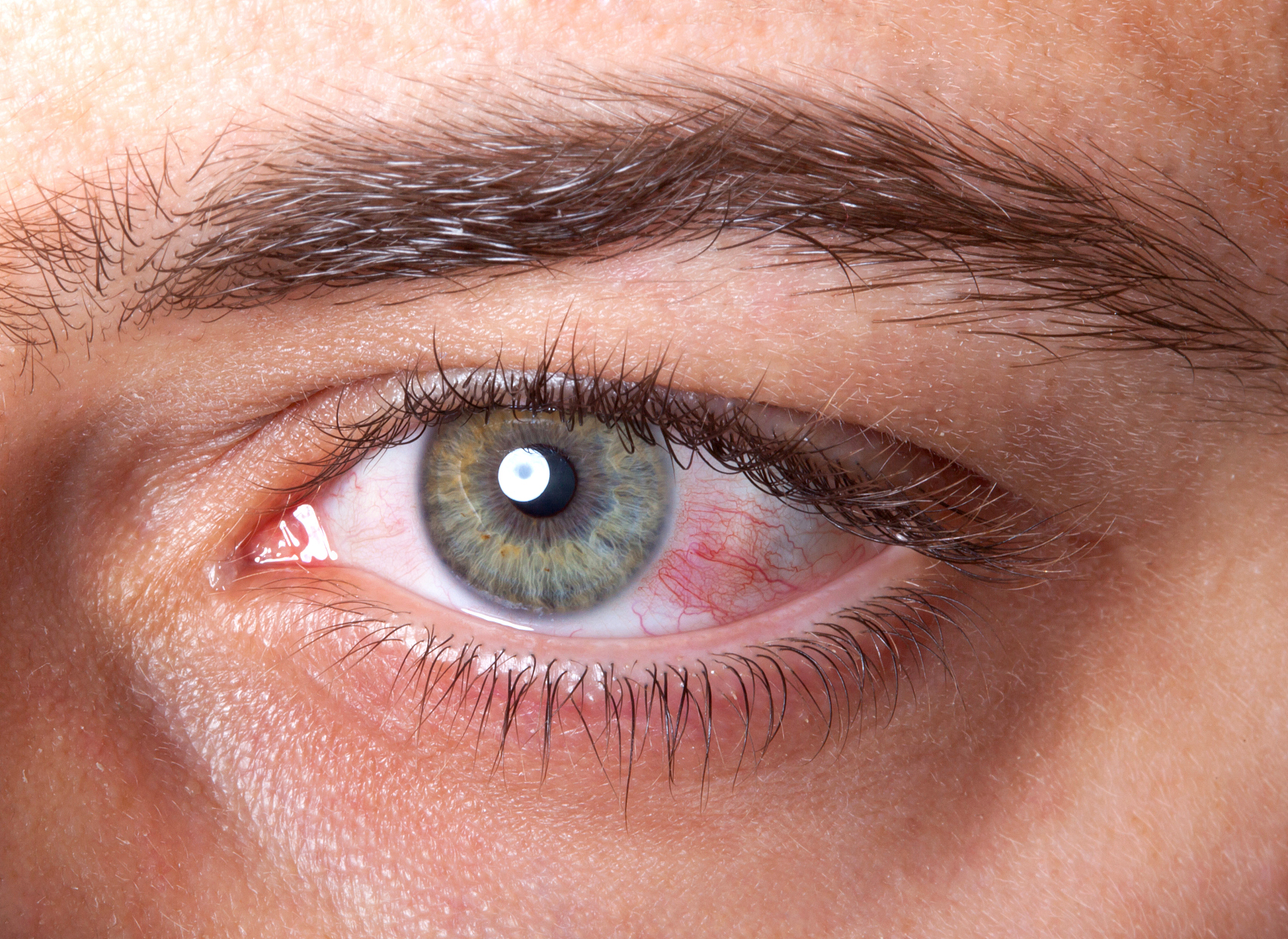“My eyes are so itchy, and they have a burning sensation.”
“Tearing up uncontrollably in the wind.”
“Swollen eyelids and red eyes…”
…
If you experience the symptoms above, please take them seriously. You may have contracted “pink eye.”
“Pink eye” is a common, highly contagious eye disease, frequently occurring in spring and summer.
Pink Eye / Identification & Symptoms
Medically termed conjunctivitis, “pink eye” is an acute infectious eye inflammation.
Based on the causative agents, it can be classified into bacterial conjunctivitis and viral conjunctivitis. While their clinical symptoms are similar, viral conjunctivitis is generally more widespread and severe in terms of epidemic potential and harmfulness.
Conjunctivitis is characterized by a brief incubation period, acute onset, and rapid progression. It is highly contagious and often leads to outbreaks.

What are the symptoms of “Pink Eye”?
Based on the speed of onset, “pink eye” can be classified into four types: hyperacute, acute, subacute, and chronic conjunctivitis.
After infection, patients may experience the following symptoms:
Severe eyelid and conjunctival hyperemia (redness) and edema (swelling)
Intense eye pain accompanied by photophobia (sensitivity to light)
Profuse watery tearing or thick, yellowish-white discharge
Foreign body sensation (feeling like something is in the eye)
Burning sensation
Itching
Blurred vision
In severe cases, systemic symptoms may occur, such as:
Headache and fever
Muscle aches
Sore throat and dry throat
Fatigue and malaise
Generally, symptoms peak within 1-2 days after onset, then gradually subside. Recovery typically occurs within approximately 7-10 days, demonstrating a distinct self-limiting tendency.
How to Distinguish Bacterial Conjunctivitis from Viral Conjunctivitis?
Failing to differentiate between bacterial and viral conjunctivitis is the most significant misconception in pink eye prevention and treatment. Although both share common symptoms like eye redness, itching, pain, tearing, and discharge, they exhibit key differences:
Feature Bacterial Conjunctivitis Viral Conjunctivitis
Discharge Thick, yellow, pus-like Watery, white, thin
Systemic Symptoms Less common Fever, tender/swollen preauricular lymph nodes
Corneal Involvement Rare More common; causes severe photophobia, tearing
Vision Impact Mild Significant blurring possible
Important Advisory
While pink eye is generally self-limiting, medical attention is essential. If symptoms occur:
Consult a doctor for precise diagnosis.
Use targeted antibiotic eye drops (if bacterial) as prescribed.
Complete the full course: Continue treatment for 1 week after symptoms disappear to prevent relapse.
Never self-medicate – follow your ophthalmologist’s protocol.
Pink Eye / Causes & Transmission
Pink eye (conjunctivitis) spreads primarily through contact transmission with pathogens (bacteria/viruses):
Direct Contact:
Pathogens transfer directly via infected secretions (e.g., handshakes, hugs, exposure to respiratory droplets or eye discharge).
Indirect Contact:
Touching contaminated objects: towels, pillows, eyewear, doorknobs, or makeup.
High-Risk Environments:
Crowded spaces: schools, public transport, pools (especially swimming pools).
Polluted areas: Dust, smoke, or radiation exposure increases viral/bacterial growth, raising risks for both eye and respiratory infections.
Poor Hygiene Habits:
Eye rubbing with unwashed hands.
Sharing personal items (towels, cosmetics).
Inadequate hand/face hygiene.
Chronic eye strain (e.g., from screen use or sleep deprivation) weakens ocular immunity, enabling infections.

How to Prevent Pink Eye?
- Strengthen Self-Protection
- Avoid close contact with infected individuals.
- Do not share items used by patients (towels, pillows, eyewear, medications).
- Wash hands thoroughly with soap immediately after potential exposure.
- Practice Rigorous Hygiene
- Never touch eyes with unwashed hands or dirty sleeves.
- Wash hands and face with running water before eating/after using the toilet.
- Keep nails short; avoid eye strain; prioritize rest and sleep.
- Avoid High-Risk Environments
- Limit time in crowded/polluted areas (e.g., public transport, pools) during outbreaks.
- Avoid swimming pools (major transmission hubs).
- Decline shared towels in restaurants.
- Maintain Environmental Cleanliness
- Disinfect surfaces (desks, keyboards) and boil towels weekly.
- Never wash face/hands in untreated water (ponds, streams).
- Protect eyes from dust, smoke, and intense light.



